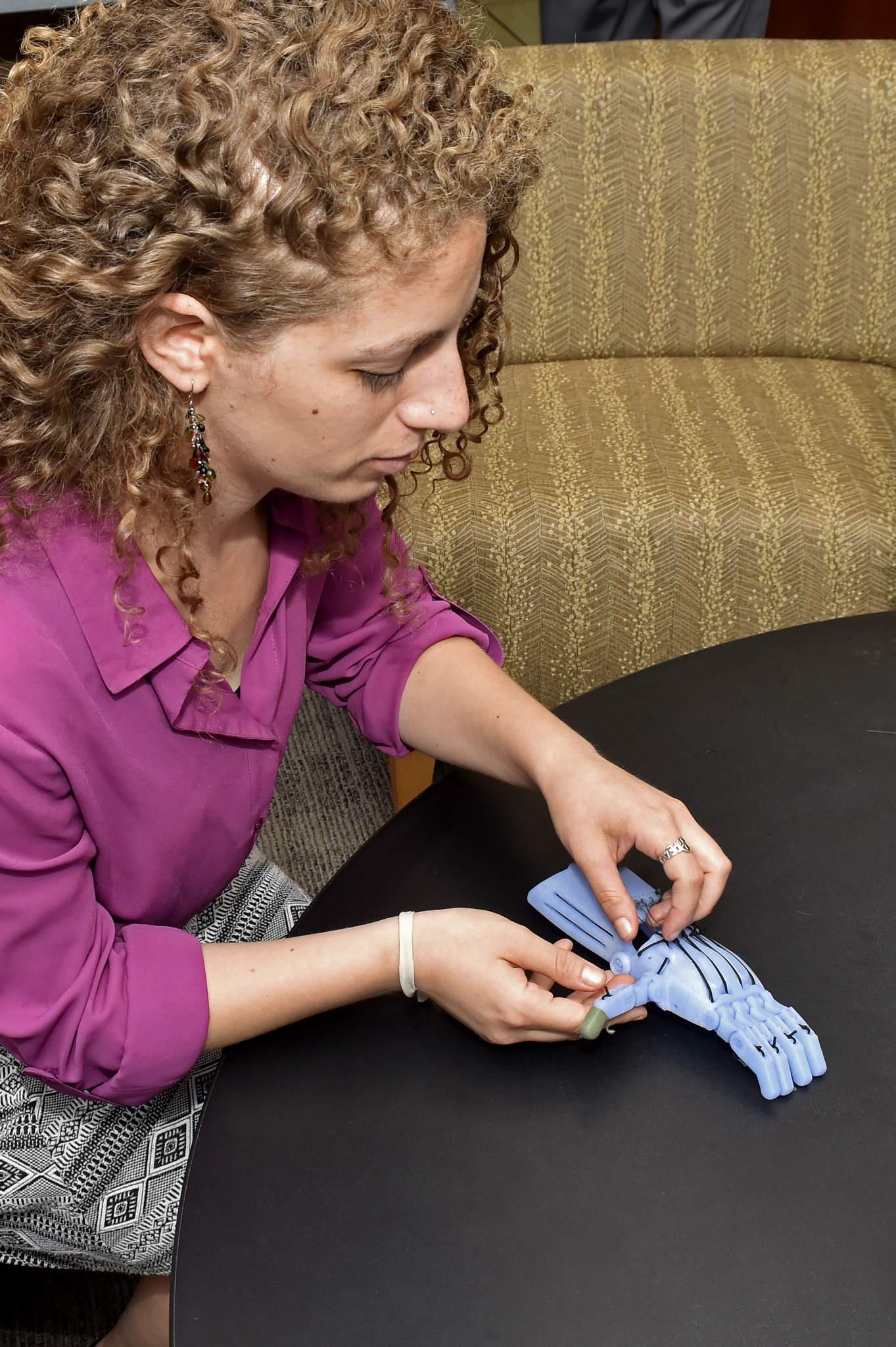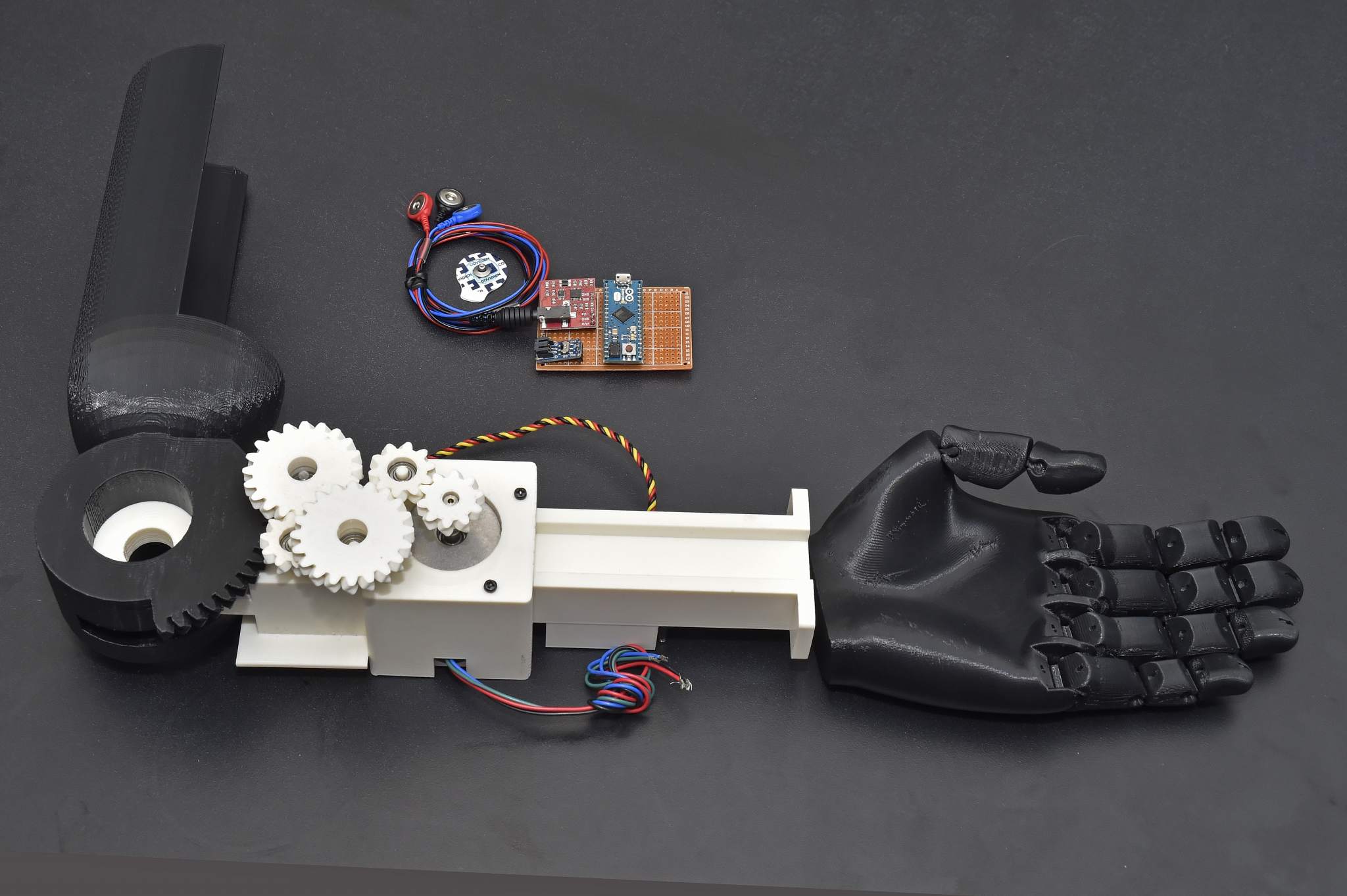3D printed hands have been giving a “helping hand” to hundreds of thousands of people who live without all or part of their arms. A growing network called e-NABLE is exactly an online community that provides such “helping hands” by promoting collaboration between hand design developers, pair developers with those in need of hands.
Anyone with access to a 3D printer can assemble e-NABLE hands for as little as $50, which is a significant savings over traditional prosthetics that can cost thousands of dollars.
Now, what they purchase may be even more updated and user-friendly thanks to MIT Lincoln Laboratory’s Technology Office Innovation Laboratory (TOIL).
Researchers from TOIL are renovating the 3D-printed hand from mainly three aspects.

Improved range of motion
Although the hands have provided users with assistive capabilities, they have some problems. One of them is that when just one finger is obstructed, all fingers become immobile, limiting grip capabilities.
To solve this, the team searched for designs that would allow the fingers to close individually. A mechanism known as the whippletree, commonly used in modern agriculture plows, vehicle windshield wipers, and telescopes, turned out to provide a solution. If one finger is obstructed or pulls harder than other links, the central joint pivots will distribute force evenly through each linkage, which is how tension is redistributed.
The truth is one design from e-NABLE has a whippletree joint that is used by four fingers. The thumb, however, is still connected directly to the tensioner box, so if the thumb is obstructed, the remaining fingers cannot move. To resolve the thumb obstruction, the Lincoln Laboratory team created a whippletree structure that includes pivoting pins for all five fingers, allowing them to move independently.

Temperature feedback
To achieve temperature detection, the researchers add a color-changing filament to the plastic that is used to print each hand. The thermochromic filament immediately changes colors when heat is applied to its surface. Therefore, the user knows that the hand is contacting a hot surface when a hand changes colors.
“It’s important for users to know whether or not a surface is hot. If the users detect heat, they can potentially prevent personal injury and hand damage, such as melting.“(Samuel VanNoy from TOIL)
Tactile feedback
The researchers also added a tactile feedback to the hand by using “icing on the cake.” The idea behind it is to add flexible tubing that runs from a fingertip to the forearm. Each end of the tubing has small pockets—one set of pockets will rest on the underside of the 3D-printed fingertip, and another set will rest on the user’s arm. The tubing filled with different liquids, like glycerol, oils, and water, will be tested according to their viscosities. When pressure is applied to the pockets on the fingertip, the fluid will move to the pockets resting on the user’s forearm, and the user will be able to feel the extra fluid pressing against her skin.

“Helping hand” to Wounded Warrior Project
Apart from what’s mentioned above, the team is working on something more sophisticated.
“We are particularly focused on helping Wounded Warrior Project members who would benefit from a strong, mechanical prosthetic. Our design can be scaled for those without a wrist to those without an entire arm.” (David Scott ,TOIL manager)
What they do is design an entire 3D-printed arm that mimics elbow and hand movement with the use of 3D-printed gears, motors, and an Arduino, or motherboard.
A user can control the arm by attaching muscle sensors connected to the Arduino to the muscles. When the user flexes the muscle, the sensor sends a signal to the Arduino, which tells the motors to move the elbow or form a grip with the attached hand. Each muscle sensor is connected to an input pin on the Arduino to allow the motor to operate accordingly.
The researchers will continue testing their hands in the next several months. They will distribute the completed designs to e-NABLE and the Wounded Warriors Project so that the technology will be readily available to those in need.
Feature image: MIT Lincoln Laboratory


